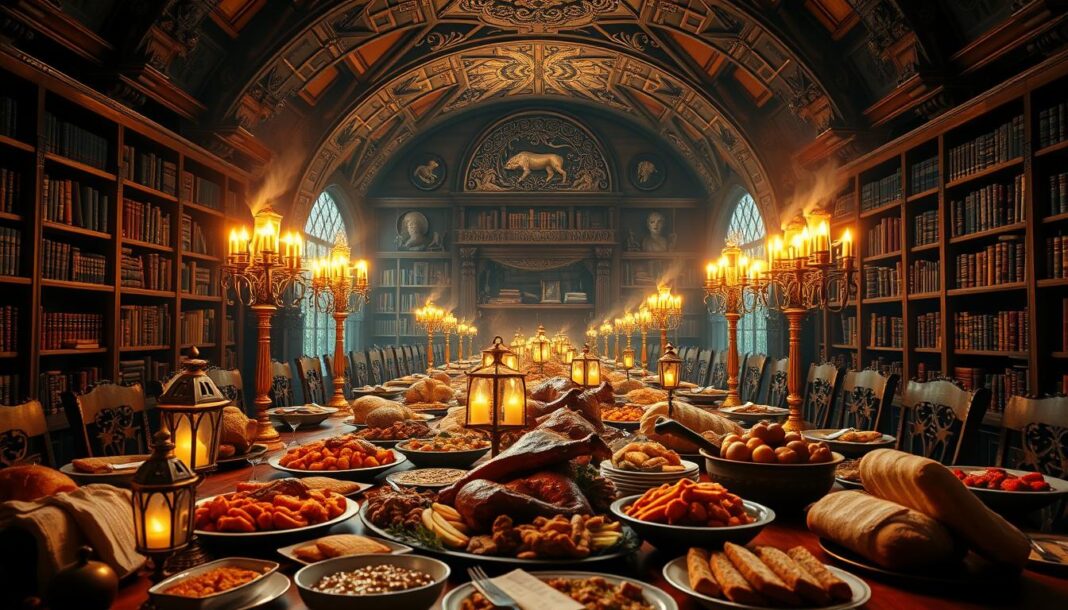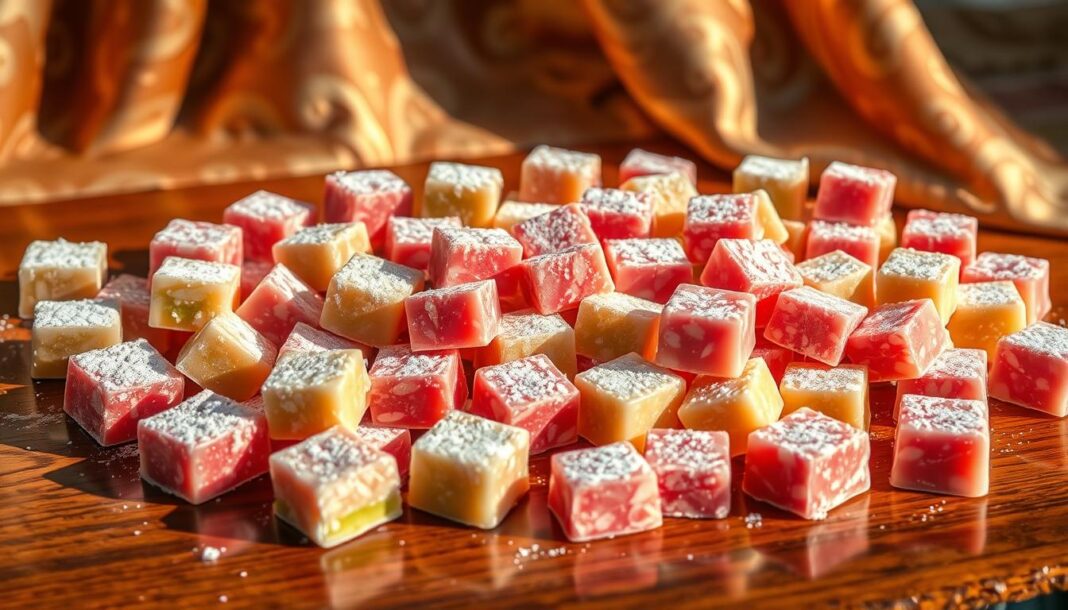C.S. Lewis’s The Chronicles of Narnia series has captivated readers with its richly detailed world, where food plays a significant role in the narrative. The depiction of meals in these books not only reflects the historical context of post-war Britain but also serves as a symbol of spiritual nourishment.
We explore how Lewis’s personal appreciation for good food influenced his writing, creating a culinary landscape that continues to inspire readers and cooks alike. By examining the role of narnia food in the series, we can gain a deeper understanding of the narrative’s themes and symbolism.
Our journey through the world of Narnian cuisine will guide you in recreating iconic dishes that bring the magic of these beloved books to your table, inspired by the culinary world C.S. Lewis created.
The Magical World of Narnia Food
The world of Narnia, as depicted by C.S. Lewis, is not just a land of wonder but also a realm where food holds significant emotional and symbolic value. In this magical land, the way characters interact with food reveals their nature and the themes of the story.
C.S. Lewis’s Food Nostalgia
C.S. Lewis’s depiction of food in Narnia was influenced by his own experiences and the cultural context of his time. Growing up, Lewis developed a deep appreciation for simple, wholesome meals, which he later reflected in his writing. The Narnia books are filled with vivid descriptions of comforting dishes that evoke a sense of warmth and hospitality.
For instance, the Beavers’ provision of tea, fish, and potatoes to the children in The Lion, the Witch and the Wardrobe exemplifies the comforting, home-cooked meals that were cherished during the post-war period.
Post-War Rationing Context
The post-war rationing period in Britain (1939-1954) had a profound impact on the cultural significance of food and bread, making even the simplest ingredients seem precious. Lewis’s writing often highlighted the value of “good ordinary food” as a reflection of the wartime mentality that celebrated simple, wholesome meals. The contrast between the scarcity of rationing and the abundance in Narnia created a powerful layer of escapism for readers.
- The strict control of ingredients during rationing made basic items like bread and potatoes highly valued.
- The simple meals in Narnia, such as those provided by the Beavers, represented an idealized version of home cooking that people longed for.
- Lewis’s emphasis on “good ordinary food” reflected the wartime mentality, elevating simple meals to something worthy of celebration.
Enchanted Treats from the White Witch
The White Witch’s enchanted treats are a pivotal element in C.S. Lewis’s narrative, weaving a complex tale of temptation and moral struggle. In The Lion, The Witch and the Wardrobe, the White Witch uses these magical confections to manipulate Edmund, drawing him into her web of deceit.
Turkish Delight: Edmund’s Temptation
Turkish Delight is perhaps the most iconic of the White Witch’s enchanted treats, symbolizing the corrupting influence of unchecked desire. This enchanted confectionery is said to be so potent that anyone who consumes it will crave more, potentially to the point of self-destruction. The significance of Turkish Delight extends beyond its immediate allure, representing a broader theme of temptation in literature.
To make an authentic Turkish Delight, one must combine sugar, cornstarch, and water to create a gel-like substance, flavored with rose water or lemon. The process requires patience, as the mixture must be cooked to a precise temperature to achieve the desired texture.

The Symbolism Behind Magical Food
The enchanted treats in The Lion, The Witch and the Wardrobe serve as more than mere plot devices; they symbolize the struggle between good and evil, with “bad magic food” contrasting against “good ordinary food.” This dichotomy is a recurring theme throughout the Chronicles of Narnia, reinforcing moral and spiritual lessons.
Literary scholars have drawn parallels between the White Witch’s offerings and biblical temptations, such as Eve’s forbidden fruit. The magical food’s impact on Edmund, making him unable to enjoy wholesome food later, demonstrates how indulgence in “bad” pleasures can diminish our capacity to appreciate simple goodness.
Mr. Tumnus’s Cozy Tea Party
As Lucy steps into Narnia, Mr. Tumnus invites her to a tea party that is a perfect blend of traditional British elements and magical Narnian charm. This moment is not just a welcoming gesture but a culinary experience that combines the simplicity of British tea traditions with the enchantment of Narnia.
A Perfect British Tea Setting
A traditional British tea setting is all about creating a warm and inviting atmosphere. To recreate Mr. Tumnus’s cozy tea party, one must pay attention to the details. Proper teacups, a teapot, and cloth napkins are essential elements that enhance the immersive experience of this literary meal. The setting should transport diners to Mr. Tumnus’s cozy cave, making them feel like they are part of the Narnian world.
The use of fine china and delicate tablecloths adds to the charm, making the tea party feel like a special occasion.
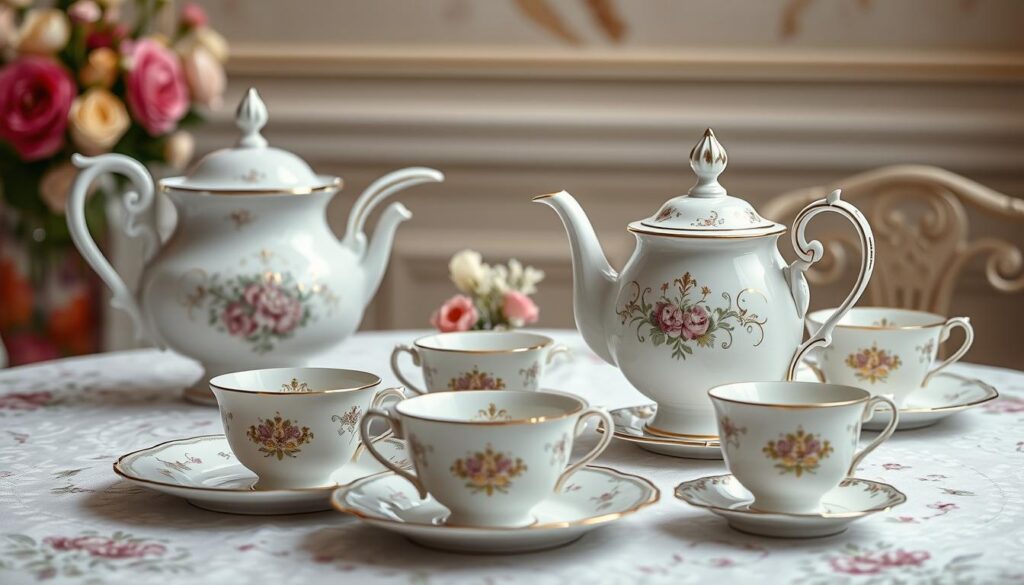
Recreating Lucy’s First Narnian Meal
Lucy’s first Narnian meal consisted of a “nice brown egg, sardines on toast, and then buttered toast, and then toast with honey, and then a sugar-topped cake.” This progression of dishes creates a complete tea experience that balances savory and sweet elements. To recreate this meal, we recommend using high-quality sardines packed in olive oil for an authentic flavor profile.
The perfect boiled egg with a slightly runny yolk completes this tea spread. Modern adaptations might include vegetarian alternatives to sardines, such as mushroom pâté on toast, while maintaining the spirit of the original meal. The inclusion of fish like sardines adds a luxurious touch to the meal.
Wholesome Meals at the Beavers’ Dam
As the children discover at the Beavers’ Dam, a warm meal can be a powerful symbol of welcome and belonging. The Beavers’ table is spread with dishes that not only satisfy hunger but also embody the warmth and kindness of their hosts.
Fish and Potatoes: Simple Wartime Comforts
The Beavers’ culinary repertoire includes simple yet nourishing dishes such as fish and potatoes, which were staples during wartime Britain. These comfort foods were not only readily available but also provided the necessary sustenance for those enduring the hardships of war. A simple fish and potato recipe can be a delightful way to bring a taste of Narnia into your home.
To recreate this dish, one can start with fresh fish, seasoned with herbs and cooked to perfection, served alongside boiled or roasted potatoes. This dish represents the practicality and resourcefulness of the Beavers’ cooking style.
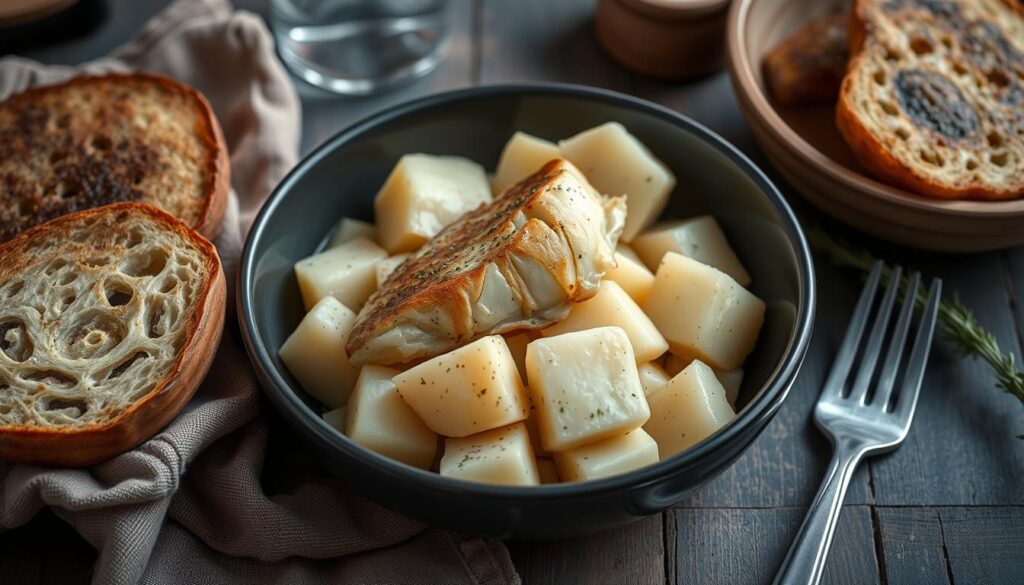
Marmalade Roll and Other Beaver Specialties
The “great and gloriously sticky marmalade roll” served by the Beavers is a quintessentially British dessert that would have been a luxurious treat during the rationing era. Achieving the perfect balance of bitter orange marmalade and sweet sponge cake, rolled while still warm, is key to this delightful dessert.
Other specialties at the Beavers’ table include “a dam good cake,” showcasing the Beavers’ talent for creating comforting, homestyle dishes that feel both familiar and magical. These dishes around the Beavers’ table represent a comforting meal that helps bridge the gap between the real world and the fantasy realm of Narnia.

Feasts Fit for Narnian Royalty
The opulence of Narnian feasts is a hallmark of the magical realm, where royalty gather to celebrate and dine on exquisite dishes. These grand meals are not just about sustenance; they are an integral part of Narnian culture, showcasing the richness and diversity of their fantastical world.

Cair Paravel’s Banquet Delights
Cair Paravel, the castle where the Pevensie children become kings and queens, hosts some of the most memorable feasts in Narnia. The banquet table is always laden with a variety of dishes, reflecting the bounty of the land and the sea. On any given day, the course of the meal might include freshly caught fish, roasted meats, and an array of sweet and savory delights.
These feasts are not just about the food; they’re about the company and the celebration of significant events. The table is set with fine linens, and the atmosphere is filled with laughter and music, making every meal a special occasion.
Centaur Breakfasts and Hearty Fare
One of the most remarkable breakfasts in Narnian literature is that of the centaurs, described in The Silver Chair. The meal includes porridge, pavenders (a fictional Narnian fish), kidneys, bacon, omelettes, cold ham, toast, marmalade, coffee, and beer. This extraordinary breakfast reflects the centaurs’ dual nature and connects to the tradition of substantial English breakfasts from the Edwardian era.
Recreating such centaur breakfasts as special occasion brunches can provide an immersive Narnia experience. While modern interpretations might substitute or omit certain organ meats, the sheer abundance and variety of the meal serve to establish the centaurs as creatures of significant appetite and endurance.
Unique Narnia Food Adventures
Delving into Narnia’s culinary delights, we uncover remarkable and unexpected flavors that transport us to a world of wonder. The Chronicles of Narnia, a book that has captivated readers for generations, is not just a tale of magic and adventure but also a journey through various culinary traditions.
Roasted Apples with Bear Meat
One of the unique dishes we come across in Narnia is roasted apples with bear meat. This dish, while unusual, represents the way Narnian characters combine available ingredients to create nourishing meals. To recreate this dish, one might start with a simple roasted apple recipe and then incorporate slow-cooked bear meat, resulting in a hearty meal fit for a day of exploration in the Narnian wilderness.
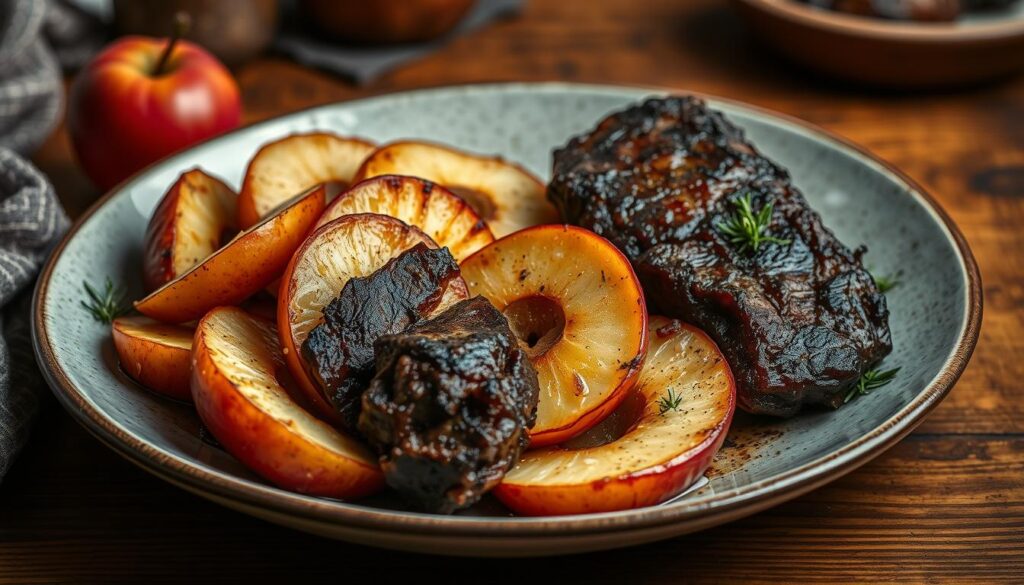
Puddleglum’s Marshwiggle Cooking
Puddleglum’s Marshwiggle cooking is a testament to the resourcefulness of Narnia’s inhabitants. The things they manage to create from the wetland ingredients are truly remarkable. Puddleglum’s approach to cooking, characterized by its practicality and a dash of pessimism, reflects his character’s pragmatic nature. Dishes like eel pie and frogs’ legs fricassee might be challenging for modern diners, but they connect to real-world wetland cooking traditions found in places like the English fens.
By embracing unusual ingredients like fish and foraged wetland plants, we can capture the spirit of Marshwiggle cuisine. This way of cooking, focused on survival rather than pleasure, yet ultimately nourishing, highlights the diversity of food cultures within Narnia. On a given day, a Marshwiggle meal might be just what’s needed to sustain travelers on their journey.
Bringing Narnia to Your Table Today
As we conclude our culinary journey through Narnia, we find that the magical land continues to inspire our tables today. The enchanting world of Narnia, as depicted in C.S. Lewis’s Chronicles, offers a rich culinary heritage that can be brought to life through creative cooking and presentation.
We can experience the books in a multisensory way by recreating the iconic dishes and feasts that have captivated readers for generations. Narnia-themed parties work wonderfully for book clubs, children’s birthdays, or holiday gatherings, with different foods representing various aspects of the Chronicles.
A well-balanced menu that includes iconic items like Turkish Delight and marmalade roll, alongside more substantial fare such as fish and potatoes or roasted meats, provides a comprehensive Narnian dining experience. Seasonal adaptations also work particularly well, with winter parties featuring hot chocolate and Turkish Delight capturing the eternal winter of Narnia, while summer gatherings might focus on fresh fruit and light, refreshing dishes reminiscent of Cair Paravel.
Involving children in the preparation of Narnian dishes not only creates educational opportunities to discuss literature, history, and cooking techniques but also fosters a deeper connection to the narrative. Attention to presentation enhances the experience, whether it’s serving tea in proper cups and saucers for a Mr. Tumnus tea party or using rustic wooden platters for Beaver Dam-inspired meals, casting a warm and inviting light on the dining experience.
The enduring appeal of Narnian food lies in its ability to transport us—through taste, smell, and shared experience—into a beloved fictional world that continues to captivate readers of all ages. Whether recreating a single iconic dish or planning an elaborate feast, bringing Narnia to your table celebrates the rich culinary heritage Lewis created within his fantasy world, shining a light on the joy of cooking and sharing meals together, in the light of wonderful memories.
